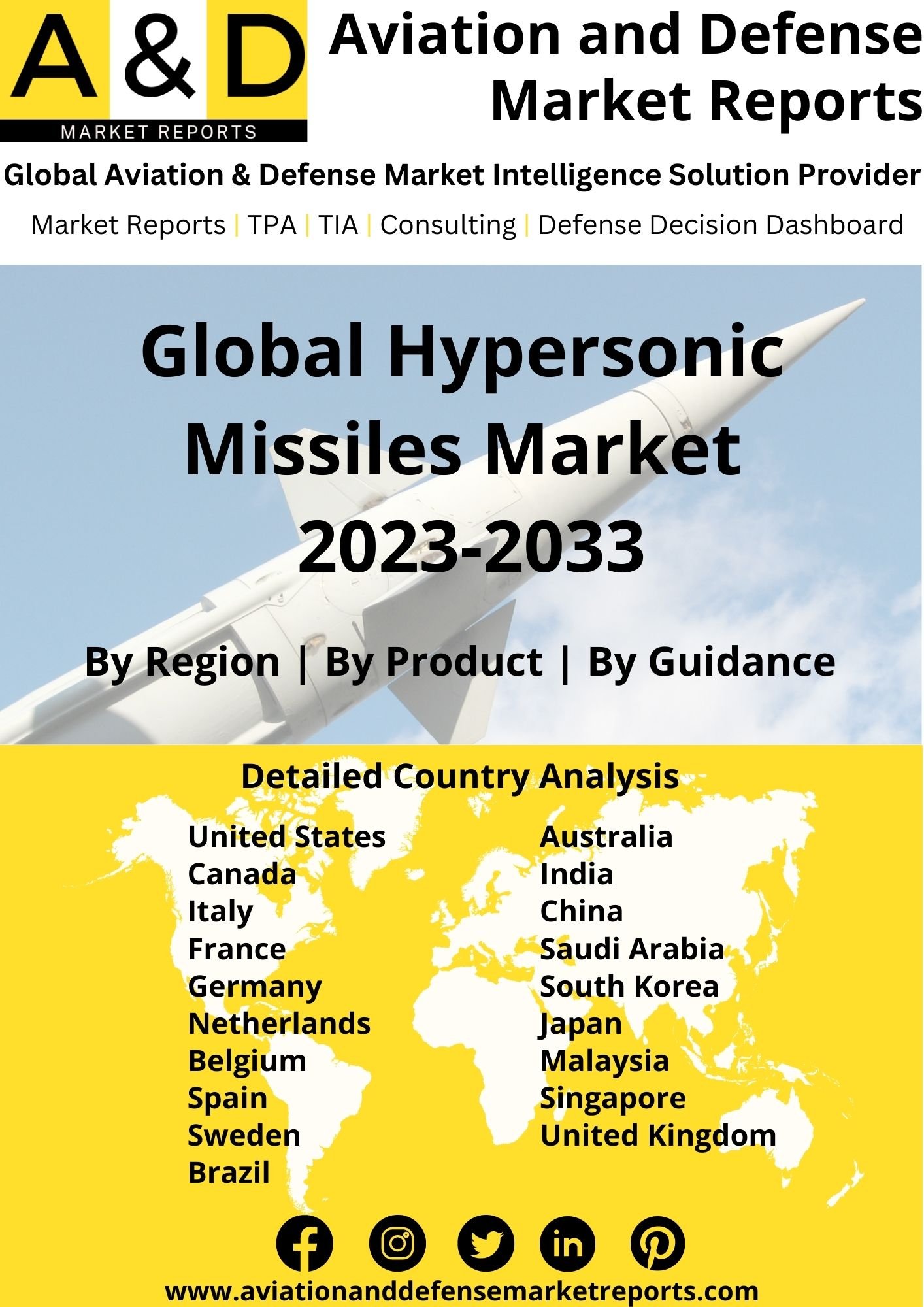Description
Global Hypersonic Missiles Market
Frequently Asked Questions of Hypersonic Missiles
Non-ICBM hypersonic weapons come in three different flavors: aero-ballistic, gliders, and cruise missiles. A hypersonic aero-ballistic system is released from an aircraft, propelled by a rocket to hypersonic speed, and then follows an unpowered ballistic trajectory. The Kinzhal is an aero-ballistic missile that Russian forces deployed to assault Ukraine. Since roughly 1980, the technology has been around. A hypersonic glide vehicle is propelled by a rocket to a great height, after which it glides and maneuvers to its destination. China’s Dongfeng-17, Russia’s Avangard, and the U.S. Navy’s Conventional Prompt Strike system are three examples of hypersonic glide vehicles. Officials from the United States have expressed alarm over China’s hypersonic glide vehicle technology surpassing that of their own. An air-breathing engine known as a scramjet is used by a hypersonic cruise missile to maintain its speed after being propelled to hypersonic speed by a rocket.
Hypersonic cruise missiles may be launched from more locations and at a lower cost since they require smaller launch rockets than hypersonic glide vehicles because they ingest air into their engines. China and the United States are both working on developing hypersonic cruise missiles. Hypersonic missile are incredible difficult to defend against. They allow very little time for evasive maneuver and hence they are considered to be very potent and lethal. The primary usage of hypersonic missiles with conventional, non-nuclear warheads is against high-value targets like aircraft carriers. The result of a large battle might be significantly influenced by the ability to eliminate such a target.
Major factors driving the hypersonic missiles market growth
Development of advanced scram jet engines will aid in development of hypersonic missiles. Since the technology is complex, very few countries are involved in research and development and hence the proliferation of hypersonic mission will consume a lot of time and effort. Advancements in control systems and guidance technology will also impact the growth of the hypersonic missiles market size..
Trends influencing the hypersonic missile market growth
The majority of high-profile hypersonic weapons use scramjet propulsion, as do hypersonic cruise missiles, or they are unpowered glide vehicles that are launched to extremely high altitudes by ballistic missile systems before gliding at high speeds toward their targets on a non-ballistic trajectory.
Hypersonic missiles market trends, by adding layers and layers of thin slices of horizontal materials, a digital model is transformed into a three-dimensional item using the computer-controlled additive manufacturing process known as 3D printing. Northrop has previously employed 3D printing to create a scramjet engine for Raytheon, and it will be essential for both the development and production phases. Because 3D printing can produce complicated shapes and sizes of objects in a short amount of time and at a low cost, its use is expanding quickly.
Hypersonic missile market forecast & dynamics
Increasing defense spending will drive the hypersonic missiles market size by new procurement activities and research and development programs. Hypersonic missiles market analysis, proliferation will also be accelerated by prevailing geo political conditions in Europe and the Asia Pacific. Hypersonic missiles market analysis, though very few countries are having the technological know-how of developing hypersonic missiles, as time progresses more countries from the developing world would also engage in development of these weapons.
Hypersonic missiles market Analysis for Recent Developments
Hypersonic missiles market reports, Just prior to the Chinese People’s Liberation Army’s (PLA) 95th founding anniversary on August 1, state-run media in China broadcast a video of what seemed to be a DF-17 missile launch for the first time. On July 30, China Central Television (CCTV) aired a documentary titled “The Chinese army’s capabilities unveiled in 81 seconds.” The Chinese specialists responded to the special broadcast by saying that the footage demonstrated the versatility of the “aircraft carrier killer” weapon, which is almost difficult to intercept. A sequence in the film depicting a live-fire missile launch from a transporter erector launcher on a roadway in the desert caught the attention of military fans in particular. The missile, according to their claims, resembled the DF-17 hypersonic missile.
Hypersonic missiles market reports, Zircon hypersonic missile systems will be acquired by the Russian Armed Forces in the upcoming months, according to Vladimir Putin, the president of the nation. “The Navy’s capabilities… are always expanding. The most advanced Zircon hypersonic missile systems, which are unstoppable and without equal anywhere in the world, need only be mentioned. Dear Brothers, the Russian Armed Forces will begin receiving them in the upcoming months “During the Navy Day parade, Putin said. He stated that the frigate Admiral Gorshkov will be the first to use this weapon in action. He stated: “The interests of maintaining Russia’s security will be used to decide the duty area of the ship equipped with Zircon hypersonic cruise missiles.
The market stands at the forefront of advanced military technologies, representing a paradigm shift in the realm of strategic weaponry. Hypersonic missiles, capable of traveling at speeds exceeding Mach 5, offer unparalleled speed and maneuverability, making them challenging to detect and intercept. The market is experiencing significant growth driven by the increasing focus on hypersonic capabilities as a means to overcome traditional missile defense systems and address emerging security threats. Technological innovations within the Hypersonic Missiles market include advancements in propulsion systems, thermal protection materials, and guidance systems, contributing to the development of highly maneuverable and precise hypersonic platforms. These innovations enhance the potential for rapid, long-range strikes, significantly reducing the response time for military forces.
Geopolitical considerations and the evolving nature of warfare influence market dynamics, with nations strategically investing in hypersonic missile capabilities to maintain a competitive edge in strategic deterrence and power projection. As global tensions persist, the Hypersonic Missiles market in 2023 reflects a commitment to technological prowess and the pursuit of military capabilities that reshape the strategic landscape, presenting both challenges and opportunities in the context of international security.
![Global_Hypersonic_Missiles_Market_2024-2034[1] Global_Hypersonic_Missiles_Market_](https://aviationanddefensemarketreports.com/wp-content/uploads/2022/08/Global_Hypersonic_Missiles_Market_2024-20341.jpg)






